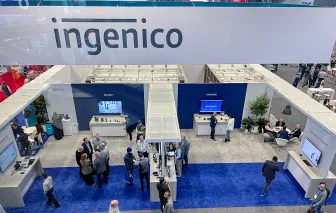When Nordstrom opened its doors as a shoe store in 1901, it was no doubt a place where the retail customer experience was intimate. Initially as a store with just one product, it’s easy to imagine the owner and clerks knew the habits and tastes of their customers. Some may even have had lines of credit there. Fast forward 121 years.
The Nordstrom family still owns the store, and its evolution into an upscale place to buy everything from shoes to home goods is matched by its continued excellence in customer service. The descendants of those same customers probably go to Nordstrom today with the same expectations. But with millions of square feet, thousands of employees, hundreds of stores and a number of ways to complete a purchase online, on mobile and in-store, it’s much more challenging to deliver that same personalized experience.
Today, when a customer is interacting with your business, how are you delivering a customer experience that is both personalized and delivers their merchandise the way they want? Access to information is key, especially at the point of interaction with the customer. Enabling them, and your employees with access to inventory data, both in the store and at other locations, as well as other information that might be relevant to their purchase can be the difference between completing the sale and the customer abandoning their cart.
Fulfillment as an experience
Technological innovation focused on fulfillment to provide a more intelligent customer experience are beginning to explode. Optimized physical shopping experiences need to match the ease of the digital shopping, providing a consistent experience across channels. Offering options like contactless payment can certainly make for a more seamless checkout, but if the customer had a hard time finding what they initially came in for, had to pivot to a different purchase or wasn’t able to have a product sent to their home, ultimate the full customer experience will have fallen short.
In Accenture’s study, The Retail Store of the Future , there is much emphasis on the fact that while customers spend a good amount of time shopping online, consumers also want to shop in person. This is driven by a need to try on, touch and feel or inspect products in person – a critical piece of their experience. For retailers, this continues to provide additional opportunities to increase basket size and build their connection with a customer.
“The store of tomorrow,” Accenture reports, is “designed to be open, flexible, and adaptable in every respect, the concept combines the speed and simplicity of digital shopping with the automated efficiency of modern warehousing—while putting a greater emphasis on the human-centered physical shopping experiences customers still crave.”
There are key steps to thinking through enhancing the customer experience in a retail environment. Accenture talks about the integration of online and offline shopping. The driver of this is to focus on the fulfillment piece of the business. Imagine a clerk knowing exactly how to track information on a real-time basis without the clunky step of trying to navigate a database. The idea is to make every step as sticky as possible.
What to consider in customer-centric fulfillment
Inventory management
Your business has to know the location of every piece of inventory, both in stock and in transit. The pandemic taught us a lot, not the least of which is the cost of disruption in service and delivery when we lose control of the supply chain. Companies must be able to deliver what the customer wants when they want it.
Intelligent supply chain
Companies must use data unlike any other time in their history. Artificial intelligence (AI) and machine learning (ML) will be key in automating warehouse operations. This will complement any robotic fulfillment already in place. Further, smart companies will need to ensure their workforce is trained and comfortable with technology. No gaps in the chain are acceptable.
Physical space matters
Ensuring that customers are getting the best experience when shopping in person is essential. While the technology advances are changing the landscape of retail, we have to be mindful that in-person shopping has to work too. Blending the traditional with the innovative to create a familiar but forward-thinking retail experience is a balancing act. Thinking about how you leverage your storefront space to cater to traditional in-store shopping as well as other fulfillment options, like buy online pick up in store (BOPIS) as well enabling customers with self-service or mobility options, ensures you’re able to get the most out of the space. It’s also important to remember that there is no one-size-fits all and that you need to do what works best to deliver a consistent brand experience that resonates with your customers needs.
Customer-centric everything
Exploring how to improve the experience a customer receives, and the relationship they establish with a brand, is what sets companies apart. There is no better time than now for focusing on customer experience. The reality of the global lockdown is that people realized they could do just about anything from home, contactless and quickly. People and businesses learned how to interact differently.
Expectations have soared in terms of what customers want and even need when they make a purchase. If companies had to anticipate customer needs before 2020, today they have to up their game even more with regard to service. A bad user experience causes frustration, confusion, and negatively impact profits. A good user experience can make sales and create happy customers.
Interested in learning about how you can increase your customer engagement and create more meaningful customer experiences? Get in touch!
Devin Pass is a Client Success Manager for Ingenico
\Photo by Craig Lovelidge on Unsplash










